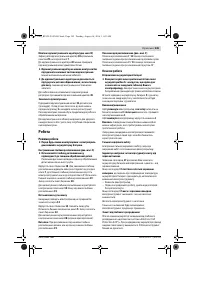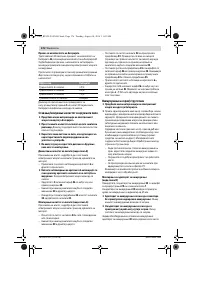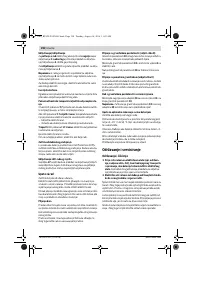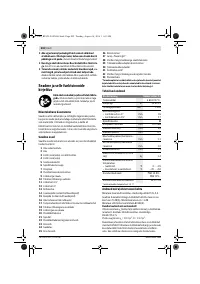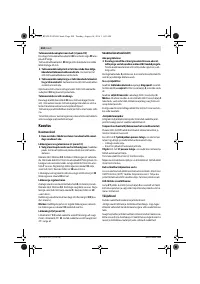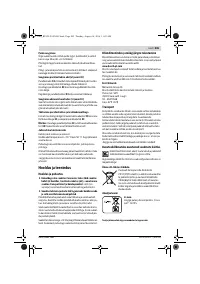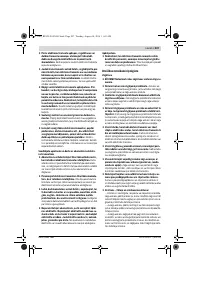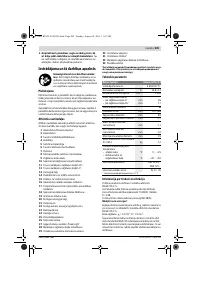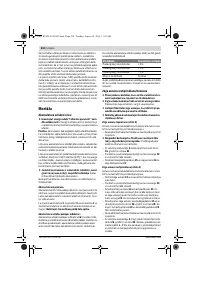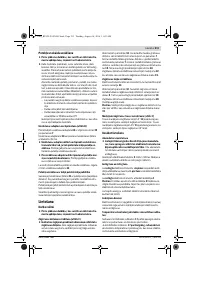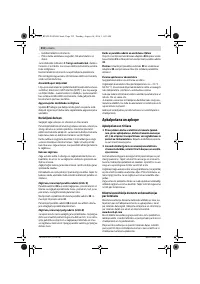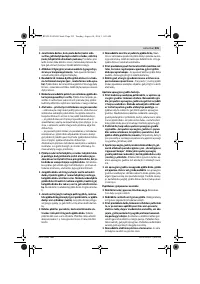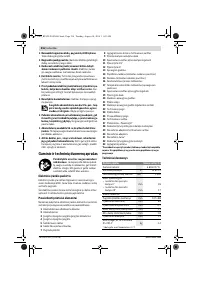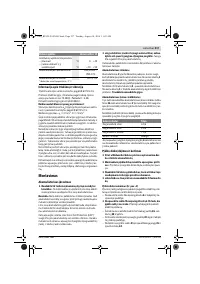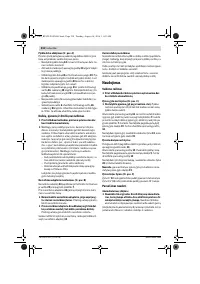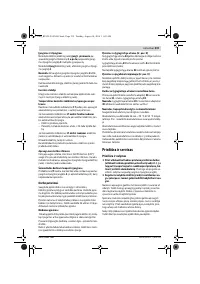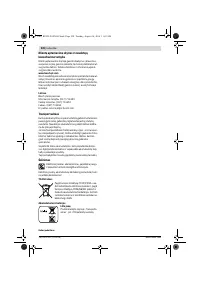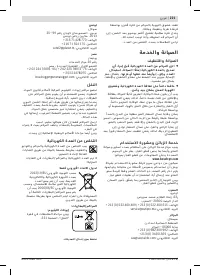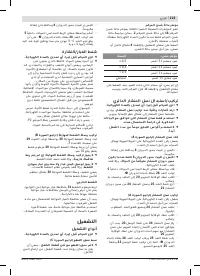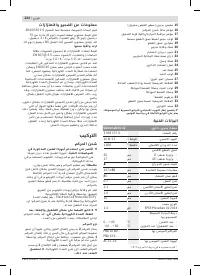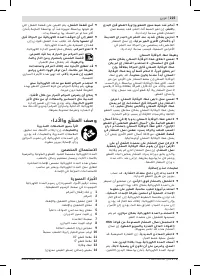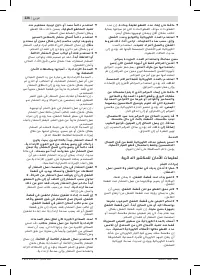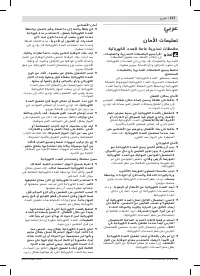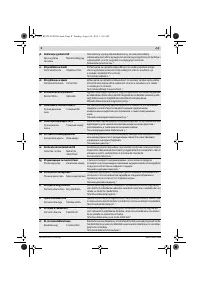Пилы дисковые Bosch 0.603.3C7.002 - инструкция пользователя по применению, эксплуатации и установке на русском языке. Мы надеемся, она поможет вам решить возникшие у вас вопросы при эксплуатации техники.
Если остались вопросы, задайте их в комментариях после инструкции.
"Загружаем инструкцию", означает, что нужно подождать пока файл загрузится и можно будет его читать онлайн. Некоторые инструкции очень большие и время их появления зависит от вашей скорости интернета.
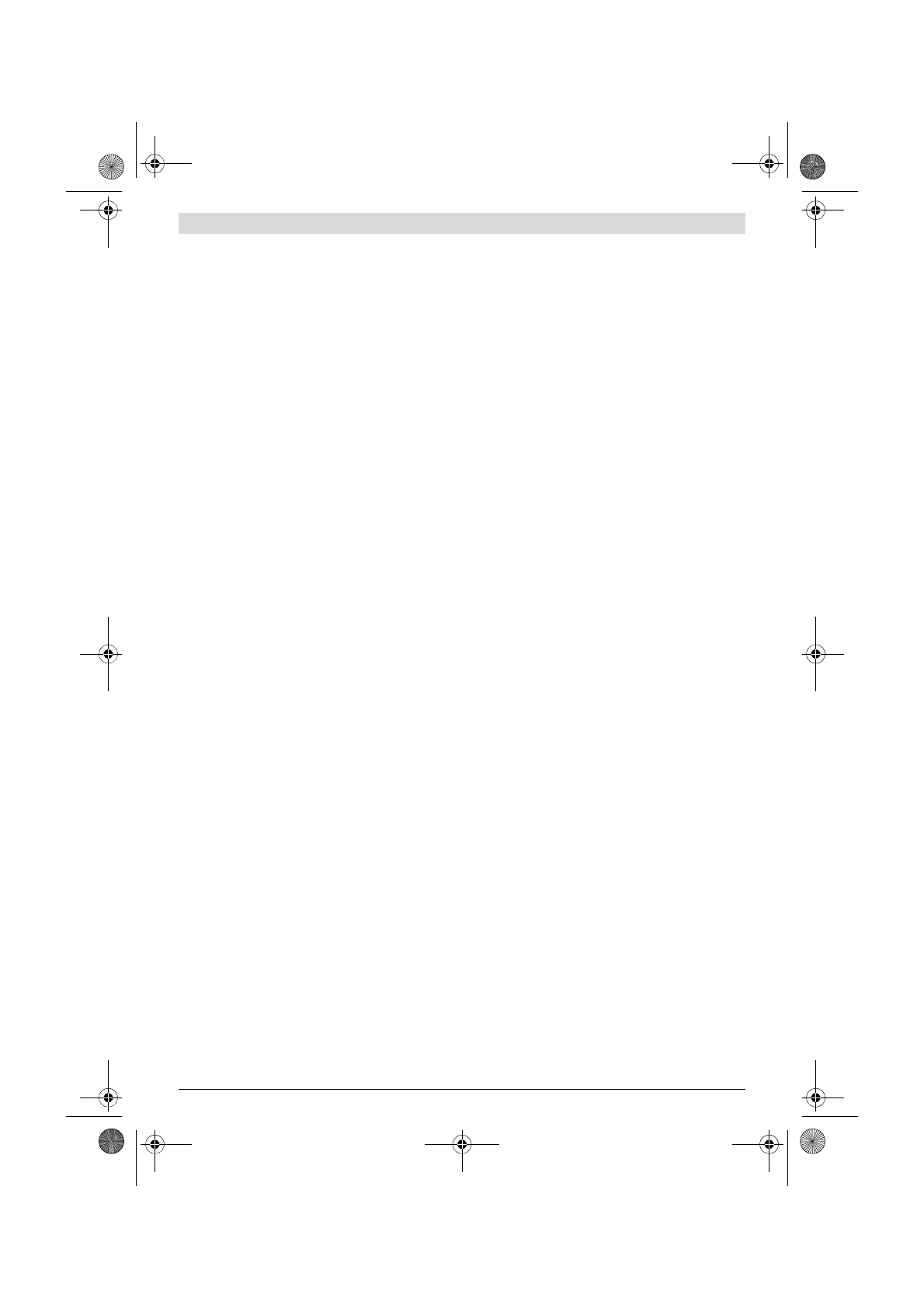
English |
15
Bosch Power Tools
1 609 92A 32F | (16.8.16)
Safety Warnings for Circular Saws
Cutting procedures
DANGER: Keep hands away from the cutting area and
the saw blade.
Do not reach underneath the workpiece.
The guard can-
not protect you from the blade below the workpiece.
Adjust the cutting depth to the thickness of the work-
piece.
Less than a full tooth of the blade teeth should be
visible below the workpiece.
Never hold piece being cut in your hands or across your
leg. Secure the workpiece to a stable platform.
It is im-
portant to support the work properly to minimize body ex-
posure, blade binding, or loss of control.
Hold the power tool by insulated gripping surfaces on-
ly, when performing an operation where the cutting
tool may contact hidden wiring.
Contact with a “live” wire
will also make exposed metal parts of the power tool “live”
and could give the operator an electric shock.
When ripping, always use a rip fence or straight edge
guide.
This improves the accuracy of cut and reduces the
chance of blade binding.
Always use blades with correct size and shape (dia-
mond versus round) of arbour holes.
Blades that do not
match the mounting hardware of the saw will run eccentri-
cally, causing loss of control.
Never use damaged or incorrect blade washers or bolt.
The blade washers and bolt were specially designed for
your saw, for optimum performance and safety of opera-
tion.
Kickback causes and related warnings
– Kickback is a sudden reaction to a pinched, bound or
misaligned saw blade, causing an uncontrolled saw to lift
up and out of the workpiece toward the operator;
– When the blade is pinched or bound tightly by the kerf
closing down, the blade stalls and the motor reaction
drives the unit rapidly back toward the operator;
– If the blade becomes twisted or misaligned in the cut,
the teeth at the back edge of the blade can dig into the top
surface of the wood causing the blade to climb out of the
kerf and jump back toward the operator.
Kickback is the result of saw misuse and/or incorrect oper-
ating procedures or conditions and can be avoided by tak-
ing proper precautions as given below.
Maintain a firm grip on the saw and position your arms
to allow you to resist kickback force. Always stay to the
side of the saw blade, never putting the saw blade in
line with your body.
The saw can jump backwards in the
event of kickback, but the operator can control kickback
force if proper precautions are taken.
When blade is binding, or when interrupting a cut for
any reason, release the trigger and hold the saw mo-
tionless in the material until the blade comes to a com-
plete stop. Never attempt to remove the saw from the
work or pull the saw backward while the blade is in mo-
tion or kickback may occur.
Investigate and take correc-
tive actions to eliminate the cause of blade binding.
When restarting a saw in the workpiece, centre the saw
blade in the kerf and check that saw teeth are not en-
gaged into the material.
If saw blade is binding, it may
walk up or kickback from the workpiece as the saw is re-
started.
Support large panels to minimise the risk of blade
pinching and kickback.
Large panels tend to sag under
their own weight. Supports must be placed under the pan-
el on both sides, near the line of cut and near the edge of
the panel.
Do not use dull or damaged blades.
Unsharpened or im-
properly set blades produce narrow kerf causing excessive
friction, blade binding and kickback.
Blade depth and bevel adjusting locking levers must be
tight and secure before making cut.
If blade adjustment
shifts while cutting, it may cause binding and kickback.
Use extra caution when sawing into existing walls or
other blind areas.
The protruding blade may cut objects
that can cause kickback.
Lower guard function
Check lower guard for proper closing before each use.
Do not operate the saw if lower guard does not move
freely and close instantly. Never clamp or tie the lower
guard into the open position.
If saw is accidentally
dropped, lower guard may be bent. Raise the lower guard
with the retracting handle and make sure it moves freely
and does not touch the blade or any other part, in all angles
and depths of cut.
Check the operation of the lower guard spring. If the
guard and the spring are not operating properly, they
must be serviced before use.
Lower guard may operate
sluggishly due to damaged parts, gummy deposits, or a
build-up of debris.
Lower guard may be retracted manually only for spe-
cial cuts such as “plunge cuts” and “compound cuts”.
Raise lower guard by retracting handle and as soon as
blade enters the material, the lower guard must be re-
leased.
For all other sawing, the lower guard should oper-
ate automatically.
Always observe that the lower guard is covering the
blade before placing saw down on bench or floor.
An un-
protected, coasting blade will cause the saw to walk back-
wards, cutting whatever is in its path. Be aware of the time
it takes for the blade to stop after switch is released.
Additional safety warnings
Do not reach into the chip ejector with your hands.
They
could be injured by rotating parts.
Do not work overhead with the saw.
In this manner you
do not have sufficient control over the power tool.
Use appropriate detectors to determine if utility lines
are hidden in the work area or call the local utility com-
pany for assistance.
Contact with electric lines can lead
to fire and electric shock. Damaging a gas line can lead to
explosion. Penetrating a water line causes property dam-
age.
OBJ_BUCH-2942-001.book Page 15 Tuesday, August 16, 2016 11:43 AM
Содержание
- 131 Указания по безопасности
- 134 Описание продукта и услуг; Применение по назначению
- 135 Данные по шуму и вибрации; Сборка; Зарядка аккумулятора
- 136 Установка/смена пильного диска; Работа с инструментом; Режимы работы
- 137 Включение электроинструмента
- 138 Техобслуживание и сервис; Техобслуживание и очистка
- 139 Транспортировка; Українська; Вказівки з техніки безпеки; Загальні застереження для електроприладів
Характеристики
Остались вопросы?Не нашли свой ответ в руководстве или возникли другие проблемы? Задайте свой вопрос в форме ниже с подробным описанием вашей ситуации, чтобы другие люди и специалисты смогли дать на него ответ. Если вы знаете как решить проблему другого человека, пожалуйста, подскажите ему :)

















































































































































